|
|
|
Sort Order |
|
|
|
Items / Page
|
|
|
|
|
|
|
| Srl | Item |
| 1 |
ID:
103650
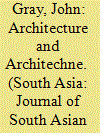

|
|
|
|
|
| Publication |
2011.
|
| Summary/Abstract |
In this paper I identify the doubleness of domestic space-not just as architecture, that is, the production of houses that expresses social reality, cultural meanings and/or cosmology, but also as architechnemacr, that is, as the embodied experience, tacit knowledge and revelation produced by everyday living in domestic space. This distinction provides the framework for analysing Nepali houses as domestic mandalas. I argue that in the taken-for-granted, everyday use of domestic space as architechnemacr, Nepalis engage in an embodied bringing forth of their houses as an enframing whole, as a structure of revealing of the cosmos and the nature of their lifeworld as Householders.
|
|
|
|
|
|
|
|
|
|
|
|
|
|
|
|
| 2 |
ID:
108259
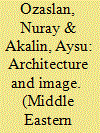

|
|
|
|
|
| Publication |
2011.
|
| Summary/Abstract |
Since the 1980s, through the creation of image-dependent products, the advertising industry in metropolitan areas of Turkey has followed new tastes by manufacturing collective identities promising 'a different lifestyle'. This has been achieved by promoting either images of past (historical) forms or of different cultures and claiming that these images represent a better future in the social network of consumption. This article presents an historical perspective on the transformation of Turkish architecture in the postmodern from an historical and cultural representation of society to the 'ordinary' and the 'clichéd'. Now buildings are made to appear 'historical' in an attempt to look different. Architecture turns into making an image that is easy to exchange, buy and sell.
|
|
|
|
|
|
|
|
|
|
|
|
|
|
|
|
| 3 |
ID:
169165
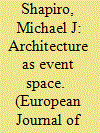

|
|
|
|
|
| Summary/Abstract |
Central to the conception of this article is the architectural theorist Bernard Tschumi's dictum, ‘There is no architecture without action, no architecture without events, no architecture without program … no architecture without violence.’ Shaped as well by Eyal Weizman's conception of ‘forensic architecture’, the focus of the investigation is on Israel's architecture of security and on the corresponding Palestinian architecture of resistance. Emphasising an encounter of cartographies that reveals the way Palestinians make life livable in response to the architectural violence they face, the analysis continues with reference to Yari Sharif's analysis of architectures of resistance and with a reading of a feature film, Hany Abu-Assad's Omar (2013) in which the Separation Wall between Israel and Palestine is one of the film's primary agent/protagonists. The article surveys popular culture texts, focused on crime and espionage to analyse a range of security practices and breaches that amplify the analysis with attention to security issues in individual households, multiple-person dwelling arrangements, architectural locations throughout cities, and buildings housing governmental security agencies. That trajectory of architectural sites lends a micropolitical analysis to the macropolitical level of governmental policy and modes of resistance to it.
|
|
|
|
|
|
|
|
|
|
|
|
|
|
|
|
| 4 |
ID:
086915
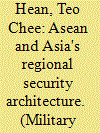

|
|
|
|
|
| Publication |
2009.
|
| Summary/Abstract |
Asia is changing, and changing rapidly. The growing economic influence and strategic importance of Notheast Asia and the Indian Sub-continent are apparent.Southeast Asia, positioned at the crossroads of India, Japan and China, is an integral part of this tapestry.
|
|
|
|
|
|
|
|
|
|
|
|
|
|
|
|
| 5 |
ID:
167476
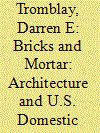

|
|
|
| 6 |
ID:
106485
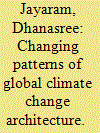

|
|
|
| 7 |
ID:
144811
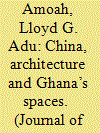

|
|
|
|
|
| Summary/Abstract |
Africa’s interaction with China is beginning to be marked tellingly by Chinese architectural inscriptions on the African cityscape which need to be deconstructed. The furore in the African press and academia that greeted the building and handing over by China of the African Union headquarters in Addis Ababa makes such an interrogation imperative. This study will attempt to offer some understanding of this nascent phenomenon using the Accra cityscape as an exemplary point of reference. In this regard this work seeks to locate the meaning of fortifications within contemporary global and local discourses on power, architecture, symbols, interests and international relations.
|
|
|
|
|
|
|
|
|
|
|
|
|
|
|
|
| 8 |
ID:
086224
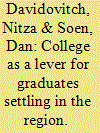

|
|
|
|
|
| Publication |
2009.
|
| Summary/Abstract |
This study examines the degree to which various factors at the College of Judea and Samaria or in the region have had a positive influence on the attitudes of the college's graduates towards the region and to what degree these factors contributed to their decision to settle in the area. In this case study this question has special significance beyond that relevant to the influence of an academic institution on a graduate's decision to settle in the region of his/her college. This special significance stems from the fact that the founding documents defining its goals, which accompanied the establishment of the College of Judea and Samaria (hereafter, CJS), explicitly state that it was the intention of the founders of the College to turn the institution into a tool, which would lead the graduates to settle in the region.1
CJS was established in 1982; in 1990 it moved its academic activities from the settlement of Qedumim to Ari'el. The College was authorized by the Council for Higher Education (CHE) to bestow a bachelor's degree in over 20 departments, divided among five faculties: engineering, architecture, social sciences and humanities, natural sciences, and health sciences. By 2005 over 4,500 graduates had received degrees at CJS. One of the advantages of the College among fellow academic institutions is its closeness to the shoreline and to the centre of Israel. Other advantages of the College in Ari'el are its accessibility by good public transportation and the low cost of living for the students in Ari'el.
|
|
|
|
|
|
|
|
|
|
|
|
|
|
|
|
| 9 |
ID:
136766
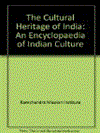

|
|
|
|
|
| Publication |
Kolkata, Ramakrishna Math and Ramakrishna Mission, 2013.
|
| Description |
8v. (lxiv, 652p.; xxviii, 738p.; xxi, 695p.; xix, 775p.; xxv, 839p.; xix, 550p.; xxxvi, 1068p.; xxxii, 1519p.)Hbk
|
| Series |
Swami Vivekananda's 150th Birth Anniversary Publication
|
| Contents |
Vol. I: The early phases (prehistoric, vedic and upanisadic, jaina, and buddhist) by Sarvepalli Radhakrishnan (8185843023)
Vol. II: Itihas, puranas, dharma and other sastras by S K De (ed.) (8185843031)
Vol. III: The Philosophies by Haridas Bhattacharya (ed.) (818584304X)
Vol. IV: The religions by Haridas Bhattacharya (ed.) (8185843058)
Vol. V: Languages and Literatures by Suniti Kumar Chatterji (ed.) (8185843066)
Vol. VI: Science and Technology by Priyadaranjan Ray (ed.) (8185843147)
Vol. VII: The arts by Kapila Vatsyayan (ed.) (8187332484)
Vol. VIII: The making of modern India (1765-1947) by Sukumar Bhattacharya (ed.) (9789381325018)
[8 vol.set - Combined ISBN 8185843015]
|
| Standard Number |
8185843015
|
|
|
|
|
|
|
|
|
|
|
|
Copies: C:8/I:0,R:8,Q:0
Circulation
| Accession# | Call# | Current Location | Status | Policy | Location |
| 058131 | 954/CHA 058131 | Main | On Shelf | Reference books | |
| 058132 | 954/CHA 058132 | Main | On Shelf | Reference books | |
| 058133 | 954/CHA 058133 | Main | On Shelf | Reference books | |
| 058134 | 954/CHA 058134 | Main | On Shelf | Reference books | |
| 058135 | 954/CHA 058135 | Main | On Shelf | Reference books | |
| 058136 | 954/CHA 058136 | Main | On Shelf | Reference books | |
| 058137 | 954/CHA 058137 | Main | On Shelf | Reference books | |
| 058138 | 954/CHA 058138 | Main | On Shelf | Reference books | |
|
|
|
|
| 10 |
ID:
178253
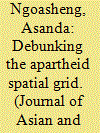

|
|
|
|
|
| Summary/Abstract |
Traditional universities are often interrogated on their pedagogic underpinnings, while universities of technology are often left unchallenged on knowledge production. Universities of technology are often assumed to be transformed because they are a post-apartheid creation, with a mainly black, working-class student body. This assumption has led to little interrogation of the university of technology and its relationship with knowledge production. This paper explores the nature of curriculum contestation and reform at a university of technology. It outlines the historical context of a university of technology and its approach to curriculum development, which has implications for current curriculum transformation efforts. Using autoethnographic research methodology, the paper tracks a multi-year journey towards the development of a transformative, socially just curriculum intervention in the extended curriculum programme for the Architecture and Interior Design programme at a university of technology. The paper concludes that curriculum change does not happen in a vacuum, that it is political, difficult and emotionally taxing, and that it is best done in collaboration with different education stakeholders.
|
|
|
|
|
|
|
|
|
|
|
|
|
|
|
|
| 11 |
ID:
086808
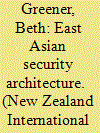

|
|
|
|
|
| Publication |
2009.
|
| Summary/Abstract |
East Asian security architecture is, as many scholars seem to enjoy pointing out,neither particularly complete in reach and depth nor excessively concrete in terms of levels of permanency. Indeed Alan Romberg, a senior associate at the Henry L Stimson Centre, has argued that Security Architecture is too grand a term for what currently exists in East Asia and what is likely to exist in the foreseeable future.
|
|
|
|
|
|
|
|
|
|
|
|
|
|
|
|
| 12 |
ID:
142482
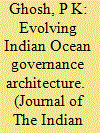

|
|
|
|
|
| Summary/Abstract |
The vast Indian Ocean is an active oceanic body encompassing extensive sea borne trade/commerce and energy transfers. Unfortunately, it is also a region plagued with a plenitude of military, economic, religious and racial insecurities and asymmetric maritime threats. However, the common thread that binds the littorals is that most of the regional trade is sea borne and hence it forms one of the primary drivers of economy in the region. In this context, a unified approach towards sea governance for overcoming myriad maritime threats and challenges facing the littorals is a diminished factor. The reason being that is the current maritime security architecture in the region and the various fora that uphold the same are mostly listless and in dire need of impetus. Comparatively bi/multilateral naval engagements have been more successful. Multilateral exercises like the MILAN and IBSAMAR (as a maritime extension of IBSA) have ensured a degree of inter-operability and helped in the maintenance of “good order at sea”. But these naval engagements suffer from inherent lacunae and cannot be substituted for a formal forum. The issue of sea governance is far larger than bi/multilateral naval meets and requires holistic approaches that may be missing from such naval exercises. This article suggests methodologies to infuse energy into existing multilateral constructs and make them relevant towards better sea governance rather than create superfluous newer ones which are often impractical.
|
|
|
|
|
|
|
|
|
|
|
|
|
|
|
|
| 13 |
ID:
093181
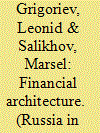

|
|
|
| 14 |
ID:
130873
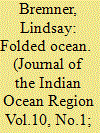

|
|
|
|
|
| Publication |
2014.
|
| Summary/Abstract |
This paper presents experimental research on the Indian Ocean being undertaken within the context of what has been termed architecture's contemporary geographic turn. It investigates how oceanic practices and protocols fold into spatial and architectural products on land, figuring both sea- and land-based logics. It frames this ocean through three tropes: as contact zone, with which are associated ideas of creolisation, transnationalism, entanglement, compaction and multi-polarity; as circulator with which are associated ideas of connectivity, passage, lane, route, choke point, network, port, dock and deposit; and as ecology, with which are associated ideas of liquidity, cycle, rhythm and climate change. The paper introduces these tropes and investigates sites brought into focus through them, highlighting the wider global dynamics or processes they reveal. It concludes with provisional thoughts about what these amphibious sites offer for understandings of architecture and urbanism in today's hyper-articulated, globalised world.
|
|
|
|
|
|
|
|
|
|
|
|
|
|
|
|
| 15 |
ID:
114569
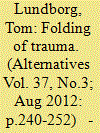

|
|
|
|
|
| Publication |
2012.
|
| Summary/Abstract |
This article examines the government of trauma by examining the rebuilding of Ground Zero as a practice of folding the traumatic event, of capturing the traumatic event by containing it within the forms of what can be said and what can be seen. Something always goes missing in this process: the ungraspable and inexpressible dimension of trauma, which ultimately resists capture. On this basis, it considers different architectural designs and proposals as expressions of different strategies of folding the traumatic event. One strategy seeks to capture and contain the traumatic event through the production of specific forms of seeing and speaking in the social field. A second strategy points to our inability to capture the traumatic event through folding. The conclusion considers how these two strategies can be used to analyze the political significance of architecture in the discourses of the war on terror.
|
|
|
|
|
|
|
|
|
|
|
|
|
|
|
|
| 16 |
ID:
156106
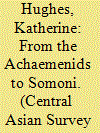

|
|
|
|
|
| Summary/Abstract |
This article focuses on the iconicity of contemporary Dushanbe’s capitol complex, with its state-sponsored architecture and memorial culture, part of the government of Tajikistan’s national identity construction. Dushanbe’s architecture post-independence is actant, a mnemonic and iconographical bridge between the present and favoured historical periods in a quest for national origins. A bricolage of historical symbols, including those of Achaemenid Iran and the early Islamic Samanids, is displayed here in a city with Soviet foundations. Together with pan-Iranian iconography is a desire by the government of Tajikistan for monumentality for its own sake. The capitol complex evokes the natural world, connected to a Central Asian conception of sacred space, suggesting an interlacing of power and religious authority. These monumental building projects are taking place against the backdrop of the destruction of Dushanbe’s ‘authentic’ Soviet architecture and built heritage in the capitol complex, itself a container for collective memory.
|
|
|
|
|
|
|
|
|
|
|
|
|
|
|
|
| 17 |
ID:
141207
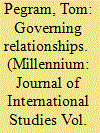

|
|
|
|
|
| Summary/Abstract |
The global human rights regime has undergone extraordinary expansion in the last thirty years. It is particularly notable for its profusion of state and non-state actors and levels of formal articulation. This article seeks to make legible the human rights governance architecture from the global to the local level, within an issue-specific domain. Orchestration theory is employed as a general mode of governance, with application across political units and political levels. Orchestration applies when a focal actor enlists and supports third-party actors to address the target indirectly in pursuit of shared governance objectives. Using the UN Optional Protocol to the Convention Against Torture (OPCAT) as an example, the article explores the authority relationship across two central political units (the orchestrator and intermediary), with a focus on how this new global human rights architecture may offer a way of bridging the steps separating international instruments from practices on the ground.
|
|
|
|
|
|
|
|
|
|
|
|
|
|
|
|
| 18 |
ID:
153011
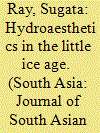

|
|
|
|
|
| Summary/Abstract |
Examining the visual tactics of framing flowing water in landscape painting and riparian architecture in Braj, a pilgrimage centre in North India where the god Krishna is believed to have spent his youth, the essay foregrounds a new conception of hydroaesthetics that emerged with the onset of the Little Ice Age (c. 1550–1850), a climatic period marked by catastrophic droughts and famines in South Asia. An engagement with the hydroaesthetics of beholding the river Yamuna's passage through Braj, the essay argues, brings to the forefront a reciprocal relationship between artistic practices based on a theological aesthetic of venerating the natural environment and ecological calamities. In doing so, the essay attempts to delineate a possible methodology for an ecological art history.
|
|
|
|
|
|
|
|
|
|
|
|
|
|
|
|
| 19 |
ID:
113258
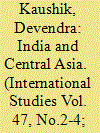

|
|
|
|
|
| Publication |
2010.
|
| Summary/Abstract |
While paying tribute to the role Rajan played in imparting a new Russian/Eurasian perspective to Central Asian studies in India, which was earlier largely Himalayancentric, the article highlights the uninterrupted character of Indo-Central Asian relationship extending over four millennia. The economic relations between the two regions of the world, however, have remained at a low level, far below their actual potential. The importance of relations with Central Asia has greatly increased due to India's growing energy demand. India may cooperate with China for reopening the Chang-Chenmo overland route along with the Kunming route connecting the Bay of Bengal with the Pacific to dissuade Beijing from developing Gwadar as a military base. Based on the richness of the historical ties successfully maintained between India and Central Asia, there can be no doubt about the strength of the motivation provided by the interconnection between geo-culture, geo-economics and geopolitics.
|
|
|
|
|
|
|
|
|
|
|
|
|
|
|
|
| 20 |
ID:
177708
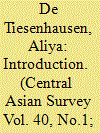

|
|
|
|
|
| Summary/Abstract |
Central Asian art and culture have been gaining increased attention both within the region and on the international scene. This special issue brings together scholars and participants in the Central Asian cultural scene who specialize in different, often isolated, spheres. This multidisciplinary approach will enhance understanding of the current trends of display, presentation, accessibility and analysis that relate to individual countries, as well as to the entire region. Some articles are by established scholars; most have resulted from extensive field research. The papers question existing notions of history and memory production by applying a decolonial discourse. Ultimately, the main unifying theme is that of identity and its formation, including national, ethnic, cultural, religious and gender. The main purpose of this special issue is to try to understand the role the cultural scene plays in society, the issues raised by cultural production and the shape it could take. The collection of papers here seeks to explore whether culture offers a representation of society and its potential for change, or the vehicle through which such change can be achieved.
|
|
|
|
|
|
|
|
|
|
|
|
|
|
|
|
|
|
|
|
|